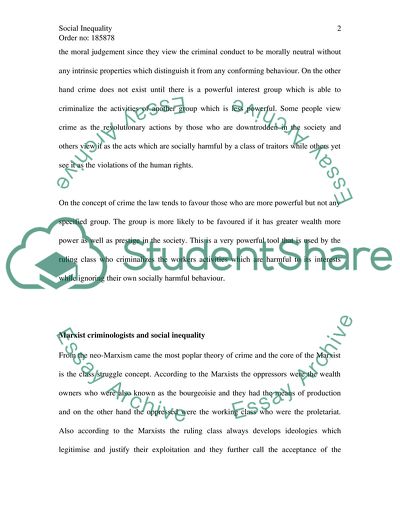Cite this document
(Marxist Criminologists and Social Inequality Case Study, n.d.)
Marxist Criminologists and Social Inequality Case Study. Retrieved from https://studentshare.org/law/1542432-in-what-ways-has-social-inequality-been-regarded-as-a-context-for-crime-in-the-work-marxist-and-left-realist-criminologits
Marxist Criminologists and Social Inequality Case Study. Retrieved from https://studentshare.org/law/1542432-in-what-ways-has-social-inequality-been-regarded-as-a-context-for-crime-in-the-work-marxist-and-left-realist-criminologits
(Marxist Criminologists and Social Inequality Case Study)
Marxist Criminologists and Social Inequality Case Study. https://studentshare.org/law/1542432-in-what-ways-has-social-inequality-been-regarded-as-a-context-for-crime-in-the-work-marxist-and-left-realist-criminologits.
Marxist Criminologists and Social Inequality Case Study. https://studentshare.org/law/1542432-in-what-ways-has-social-inequality-been-regarded-as-a-context-for-crime-in-the-work-marxist-and-left-realist-criminologits.
“Marxist Criminologists and Social Inequality Case Study”. https://studentshare.org/law/1542432-in-what-ways-has-social-inequality-been-regarded-as-a-context-for-crime-in-the-work-marxist-and-left-realist-criminologits.


